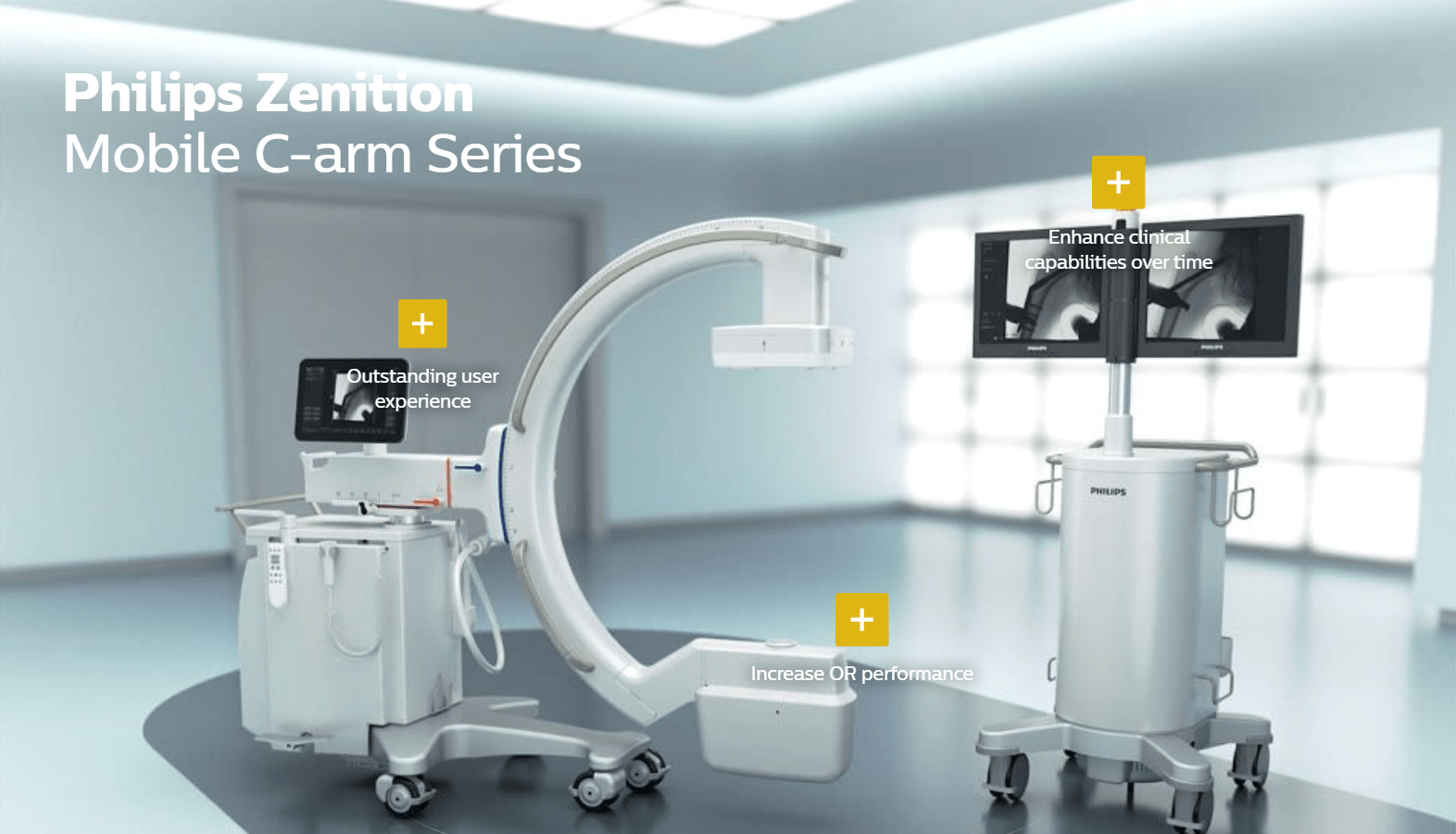Philips Announces Two Innovations to Zenition Mobile C-arm Platform, Enhancing Operating Room Workflow
New changes will come to market in Q2 2020
Philips Zenition Mobile C-Arm Platform. Image from Philips Healthcare

Philips Healthcare has announced two major innovations to its X-ray system, the Zenition mobile C-arm platform, including a new Table Side User Interface and an extension integrating intravascular ultrasound (IVUS).
With the change to the Table Side User Interface, clinicians will be able to operate the C-arm inside a sterile field. It also streamlines communication with the operator and potentially makes controlling the system more intuitive. While standing at the table, the clinician will be able to use a tablet-like user interface with a 12.1-inch display to control the system. Providers can also choose to position the interface at a variety of angles or use it as a viewing monitor on the patient table, according to company information.
Additionally, the Zenition has been extended to IVUS for peripheral vascular procedures, potentially streamlining activity and workflow in the operating room. As a catheter-based imaging technology, IVUS lets physicians see blood vessels from the inside-out. This can improve treatment for peripheral vascular and coronary patients.
Information gathered from analyzing vascular morphology in blood vessels and providing vessel cross-sectional imaging, IVUS can contribute to correctly sizing stents and confirming whether treatment is complete, according to the release. Providers will now be able view and control IVUS imaging output, including measurement and replay features, from the Zenition.
The Zenition system is CE marked and already available in the U.S. market, and the innovations will be available in the second quarter of 2020. Customers will be able to purchase the Table Side User Interface for use on the Zenition 70, and the IVUS integration will be available across the entire Zenition portfolio.